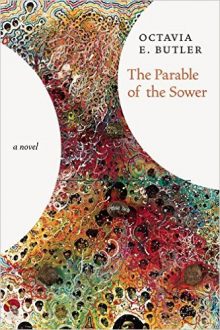Drawing of Octavia E. Butler courtesy of Pam Winter
“Habit is persistence in practice.”—Octavia E. Butler
Octavia E. Butler (1947-2006) is a writer, creator, world-builder and genius who made room in the white male-dominated science fiction world for works with African American female leads. While her literary output is not voluminous (in her 30-year career as a published author she wrote only 12 books and one collection of short stories), each one of her works is monumental in its depth, thought, and execution. How did Butler become this masterful creator of universes? Libraries, of course. Butler’s ability to be creative and to be continually inspired to create is deeply tied to her library habit. Libraries helped to shape Butler into a writer and her relationship with the Central Library, in particular, served as an environment that allowed her to flourish. According to Butler, “Public libraries … are the open universities of America.”

Octavia E. Butler at the Central Library in 1995. Photographer unknown. Photo courtesy of the Estate of Octavia E. Butler, [HM 80670]

Octavia E. Butler at the Central Library in 1995. Photographer unknown. Photo courtesy of the Estate of Octavia E. Butler, [HM 80670]
Butler grew up in Pasadena, cared for by her single working class mother, Octavia M. Butler, a maid who planted the seeds that inspired her daughter to read. In Positive Obsession, the younger Butler writes:
“My mother read me bedtime stories until I was six years old. It was a sneak attack on her part. As soon as I really got to like the stories, she said, ‘Here’s the book. Now you read.’ She didn’t know what she was setting us both up for.”—Butler, Bloodchild
To read more of the blog, click HERE.




